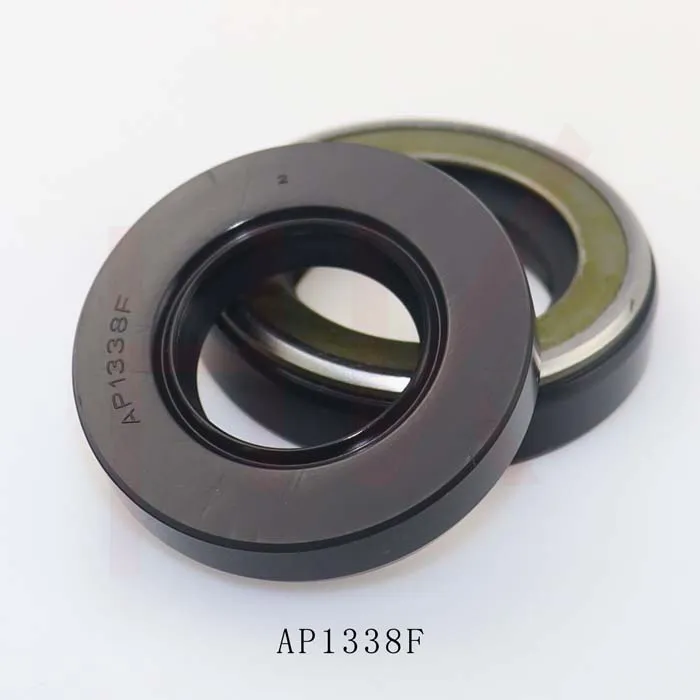11 月 . 01, 2024 18:59 Back to list
Cylinder Gland Seal Design and Implementation for Enhanced Performance and Durability
Understanding Cylinder Gland Seals A Key Component in Hydraulic Systems
In hydraulic systems, the importance of maintaining optimal pressure and preventing fluid leakage cannot be overstated. One critical component that plays a pivotal role in achieving these objectives is the cylinder gland seal. This article delves into the function, design, and significance of cylinder gland seals in hydraulic applications.
What is a Cylinder Gland Seal?
A cylinder gland seal, commonly used in hydraulic cylinders, is a sealing device designed to prevent the escape of hydraulic fluid from the cylinder. Typically situated at the rod end of the cylinder, the gland seal forms a barrier that maintains the internal pressure of the hydraulic system while allowing the rod to move in and out of the cylinder. This is essential for the efficient operation of machinery that relies on hydraulic power.
How Do Cylinder Gland Seals Work?
Cylinder gland seals operate by exerting pressure against the cylinder wall, creating a tight seal around the rod as it extends and retracts. The seal is designed to withstand high pressures and harsh operating conditions, including temperature fluctuations and exposure to various hydraulic fluids. The materials used for gland seals typically include rubber, polyurethane, or Teflon, selected based on their durability, elasticity, and resistance to compression set.
As the hydraulic cylinder is activated, controlled fluid movement occurs behind the gland seal. This mechanism allows for smooth and efficient operation while preventing any fluid from leaking out. Proper sealing is crucial not only for the performance of the hydraulic system but also for the safety of the equipment and its operators.
Types of Cylinder Gland Seals
There are various types of cylinder gland seals, each tailored for specific applications. Some of the most common types include
cylinder gland seal

1. U-Cup Seals These seals, shaped like the letter U, are highly effective in retaining hydraulic fluids and are relatively easy to install. They are often used in low to medium-pressure applications.
2. V-Rings These seals create a radial seal and are designed to accommodate axial movements. They are commonly employed in applications where dynamic sealing is necessary.
3. O-Rings Often used in conjunction with other seals, O-rings can provide both static and dynamic sealing capabilities, ensuring the integrity of the hydraulic system.
4. Lip Seals These incorporate a lip that engages the rod, forming a seal that allows for high-speed operation while minimizing wear and leakage.
Importance of Cylinder Gland Seals
The proper functioning of cylinder gland seals is vital to the overall efficiency and safety of hydraulic systems. Leaks can result in significant hydraulic fluid loss, leading to reduced performance and increased operational costs. Moreover, fluid leakage can pose environmental hazards and safety risks for machinery operators.
Regular inspection and maintenance of cylinder gland seals can help identify wear or damage before they lead to failure. Replacement seals should be chosen based on compatibility with the specific hydraulic fluid and operating conditions of the system. Additionally, training personnel in proper sealing practices can prevent common errors associated with installation and maintenance.
Conclusion
In conclusion, cylinder gland seals are an integral part of hydraulic systems, ensuring fluid retention, system efficiency, and operational safety. Their design and functionality are critical to preventing leaks and maintaining system pressure. By understanding the characteristics and types of cylinder gland seals, operators can make informed decisions to enhance the performance and longevity of their hydraulic systems. Regular maintenance and timely replacements will ensure these seals continue to function effectively, contributing to the reliability of hydraulic machinery.
-
The Power of Advanced Sealing: High-Pressure Solutions for Modern Machinery
NewsOct.29,2024
-
Optimizing Machinery with High-Performance Oil Seals
NewsOct.29,2024
-
Maximizing Machinery Efficiency with Advanced Oil Seals
NewsOct.29,2024
-
Ensuring Equipment Longevity with Quality Oil Seals
NewsOct.29,2024
-
Enhance Equipment Performance with Quality Oil Seals
NewsOct.29,2024
-
Custom Oil Seals for Specialized Machinery Needs
NewsOct.29,2024
-
The Role of Wiper Seals in Dust Sealing and Oil Protection
NewsOct.20,2024
Products categories
















